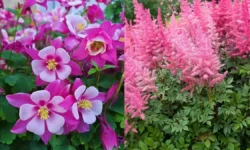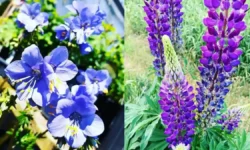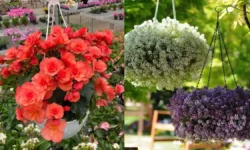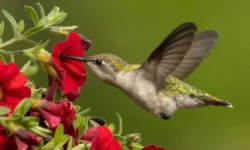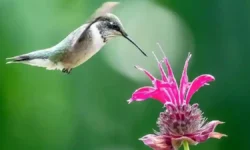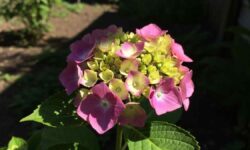Cymbidium orchids, often referred to as boat orchids, are among the most admired and elegant orchid varieties cherished by gardeners worldwide. Their stunning flower spikes and long-lasting blooms make them a favorite choice for both novice and experienced plant lovers. However, to keep these beautiful orchids thriving year after year, it is essential to understand their specific care requirements.
This comprehensive guide reveals essential cymbidium orchid plant care secrets that all gardeners should know, helping you nurture vibrant, healthy plants with spectacular flowers.
Table of Contents
Understanding Cymbidium Orchids: An Overview
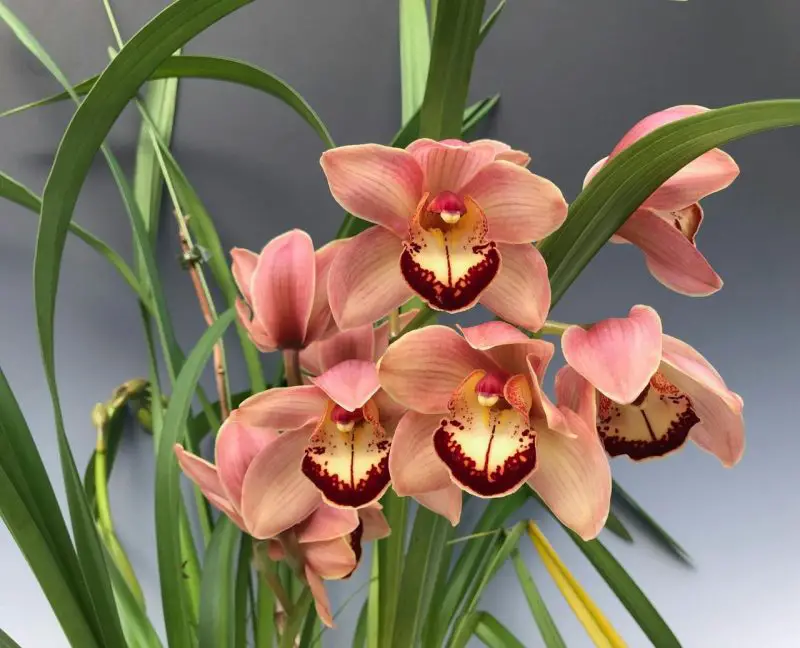
Before diving into care secrets, it is helpful to understand what makes cymbidium orchids unique. Native to Asia and Australia, cymbidiums are prized for their large, waxy flowers that bloom on tall spikes. Unlike some tropical orchids, cymbidiums can tolerate cooler temperatures, which expands their growing range. They typically produce clusters of flowers in shades ranging from white, yellow, pink, green to rich maroons.
These orchids grow from pseudobulbs—thickened stem bases that store water and nutrients, enabling the plant to survive periods of drought. Their long, strap-like leaves add to their ornamental appeal even when the plant is not in bloom. The natural growth cycle of cymbidiums involves a period of active growth, flowering, and rest, and understanding this cycle is crucial for proper care.
Ideal Growing Conditions for Cymbidium Orchids
Cymbidiums require specific environmental conditions to flourish, and gardeners must tailor their care accordingly. One of the most important factors is temperature. Cymbidiums prefer cooler nights, generally between 50 to 60°F (10 to 16°C), and daytime temperatures between 70 to 85°F (21 to 29°C). This temperature difference stimulates flower spike development and promotes healthy blooms.
Light is another key element. These orchids thrive in bright but indirect sunlight. Direct harsh sun can scorch their leaves, while too little light results in weak or no flowering. In their natural habitat, cymbidiums often grow under the shade of taller trees, which provides filtered light—a condition gardeners can replicate with shade cloths or by placing plants near east or west-facing windows.
Humidity also plays a vital role in cymbidium care. While they are more tolerant of lower humidity than some tropical orchids, maintaining humidity around 40 to 60% helps the plant stay healthy and prevents leaf drying. In dry indoor environments, using humidifiers or pebble trays with water can boost ambient moisture levels.
Watering Techniques for Optimal Growth
Water management is often a challenge with orchids, and cymbidiums are no exception. These orchids prefer moist but well-drained soil conditions. Overwatering can lead to root rot, while underwatering causes dehydration and leaf damage.
The best watering practice is to thoroughly soak the potting medium when watering, ensuring water reaches the roots. After watering, the medium should be allowed to dry slightly before the next watering. The frequency depends on factors such as temperature, humidity, and pot size. During the active growing season in spring and summer, cymbidiums generally need more frequent watering than during their resting period in winter.
It’s also essential to avoid letting the plant sit in standing water. Good drainage in pots and containers prevents water accumulation at the roots, which can harm the plant. For outdoor-grown cymbidiums, natural rainfall often suffices, but supplemental watering may be necessary during dry spells.
The Right Potting Medium and Repotting Practices
Choosing the proper potting medium is fundamental to cymbidium orchid health. Unlike typical houseplants, orchids need a medium that mimics their natural growing environment—one that offers good aeration and drainage while retaining some moisture.
Common potting mixes for cymbidiums include chunky bark, perlite, charcoal, and sphagnum moss in varying proportions. This mixture allows roots to breathe and prevents waterlogging. The medium should not compact over time, as this reduces air circulation and promotes fungal issues.
Repotting cymbidium orchids every two to three years is recommended to refresh the medium and accommodate growth. The ideal time for repotting is just after flowering when new root growth begins. When repotting, it is important to handle the plant carefully, trimming dead roots and placing the pseudobulbs just above the new medium surface. Fresh potting mix supports better root development and overall plant vigor.
Fertilizing Cymbidium Orchids for Robust Growth
Providing adequate nutrients is crucial for the vibrant growth and prolific blooming of cymbidiums. Unlike many plants, orchids have specific nutrient requirements that need to be met in a balanced manner.
Gardeners often use specialized orchid fertilizers that provide a balanced ratio of nitrogen, phosphorus, and potassium, along with essential micronutrients. During the active growth phase in spring and summer, feeding cymbidiums every two weeks with a diluted fertilizer promotes healthy foliage and flower spike formation.
As the plant approaches its resting phase in late fall and winter, fertilization should be reduced or stopped to allow the orchid to rest naturally. Overfertilization can damage roots and cause salt buildup in the potting medium, so flushing the soil with water occasionally helps prevent nutrient accumulation.
Managing Pests and Diseases
While generally hardy, cymbidium orchids can be susceptible to certain pests and diseases that gardeners should monitor regularly. Common pests include aphids, scale insects, spider mites, and mealybugs. These pests feed on plant sap, weakening the orchid and potentially spreading diseases.
Preventive care such as keeping the plant clean, ensuring good air circulation, and avoiding overcrowding can minimize pest problems. When infestations occur, natural remedies like insecticidal soaps or neem oil can be effective without harming the plant.
Cymbidiums can also face fungal and bacterial infections, particularly if grown in overly wet or stagnant conditions. Root rot and leaf spot diseases are common issues. Proper watering, avoiding water accumulation on leaves, and maintaining a clean environment are critical in preventing such problems.
Encouraging Flower Spike Development and Blooming
One of the primary goals for gardeners growing cymbidiums is to achieve abundant and striking blooms. Flower spike development requires a combination of environmental cues and proper care.
Cool nighttime temperatures during late summer and early fall trigger the formation of flower spikes. Ensuring that the plant experiences a consistent drop in temperature during this period is vital. Gardeners can move plants outdoors in the evenings or to cooler indoor locations if necessary.
Balanced fertilization and consistent watering during the growing season also support healthy spike growth. Avoid disturbing the plant once flower spikes appear, as cymbidiums are sensitive to changes and may drop buds if stressed.
Once flower spikes emerge, maintaining stable humidity and moderate light levels will help flowers open fully and last for weeks. Removing spent flowers promptly encourages the plant to conserve energy for future growth.
Winter Care and Dormancy
Cymbidiums enter a natural resting period in winter, during which their growth slows and flowering ceases. This dormancy phase is essential for the plant’s health and prepares it for the next blooming cycle.
During dormancy, watering should be reduced, but the medium should not be allowed to dry out completely. Temperatures can be slightly cooler, but extreme cold must be avoided. Fertilization is usually halted until new growth resumes in spring.
Providing good air circulation and avoiding excess moisture during winter reduces the risk of fungal diseases. Many gardeners find that understanding and respecting the dormancy period leads to more vigorous blooms in the following season.
Propagation Methods for Cymbidium Orchids
For gardeners eager to expand their collection, propagating cymbidiums can be rewarding. The most common method is division, which involves separating mature plants into smaller sections, each with at least three healthy pseudobulbs.
Division is best performed during repotting after the flowering period. Carefully separate the clumps, trim any damaged roots, and plant divisions into fresh medium. With proper care, new plants will establish and eventually bloom.
Other propagation methods like seed propagation are possible but more complex, requiring specific conditions and often performed in laboratory settings. Division remains the most practical and reliable approach for home gardeners.
Common Mistakes to Avoid in Cymbidium Care
Many gardeners, especially beginners, make avoidable mistakes when caring for cymbidium orchids. Overwatering and poor drainage are among the top issues leading to root rot. It is crucial to balance moisture levels carefully and use a suitable potting mix.
Insufficient light is another common problem. Without enough bright, indirect light, cymbidiums may fail to bloom or develop weak, leggy growth. Conversely, exposing the plant to direct, harsh sunlight can scorch leaves.
Neglecting the natural growth cycle, such as overfertilizing during dormancy or failing to provide cooler night temperatures in fall, can also impact flower production. Understanding the plant’s rhythms and adapting care accordingly is essential for success.
FAQs about Cymbidium Orchid Plant Care
What temperature do Cymbidium orchids prefer?
Cymbidium orchids thrive in cooler temperatures with daytime ranges from 70 to 85°F (21–29°C) and cooler nights between 50 to 60°F (10–16°C), which helps trigger blooming.
How often should I water my Cymbidium orchid?
Water your Cymbidium thoroughly, allowing the potting medium to dry slightly between watering. Generally, water more frequently during active growth in spring and summer, and reduce watering in winter dormancy.
What kind of light do Cymbidium orchids need?
They prefer bright, indirect sunlight. Avoid direct harsh sunlight, which can scorch leaves. Filtered light or morning sun with afternoon shade works best.
When is the best time to repot Cymbidium orchids?
Repotting is ideal just after flowering, every two to three years, to refresh the potting medium and accommodate plant growth.
How can I encourage my Cymbidium orchid to bloom?
Providing cooler night temperatures in late summer to early fall, consistent watering, balanced fertilization during growth, and sufficient bright indirect light encourages flower spike development.
Conclusion: Unlocking the Secrets to Cymbidium Orchid Success
Caring for cymbidium orchids may seem daunting at first, but with the right knowledge and attention, any gardener can enjoy their spectacular blooms and graceful foliage. From understanding their ideal environmental conditions to mastering watering, fertilization, and pest management, each aspect plays a vital role in the orchid’s health and beauty.
By following the care secrets outlined in this guide, you can nurture robust cymbidiums that reward you with long-lasting, vibrant flowers season after season. Patience, observation, and a willingness to learn from each growing cycle will make your journey with cymbidium orchids both enjoyable and fulfilling.

